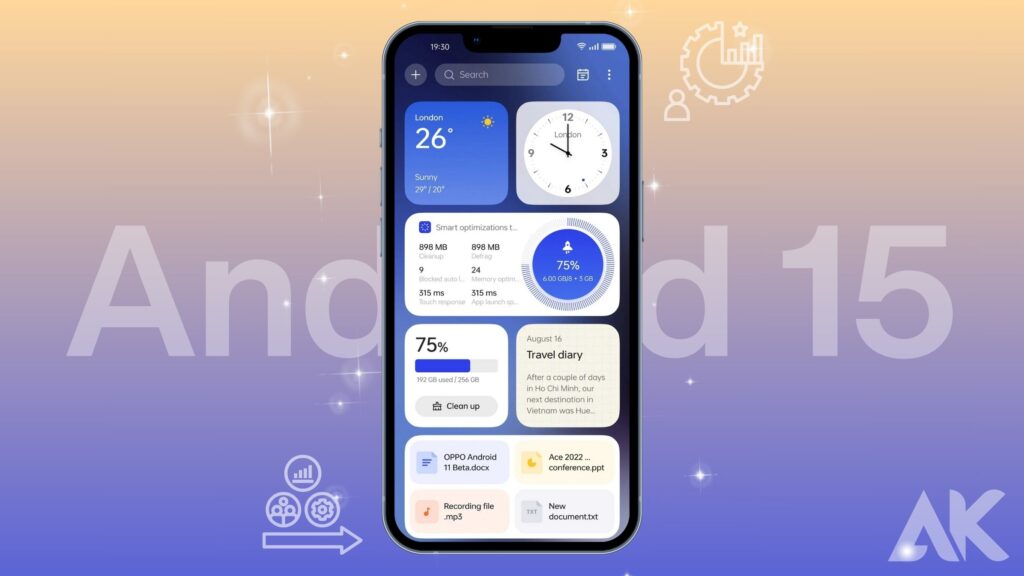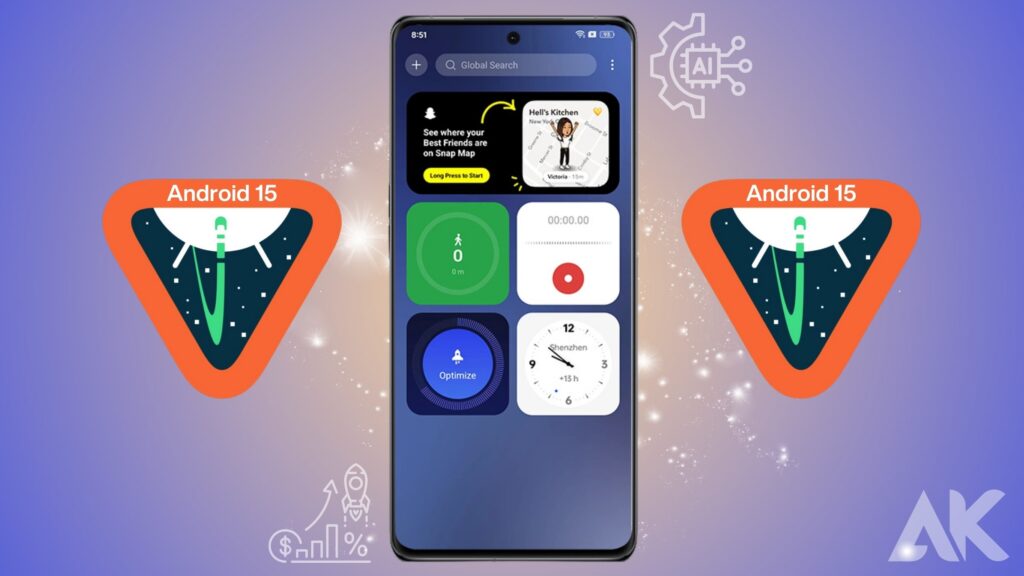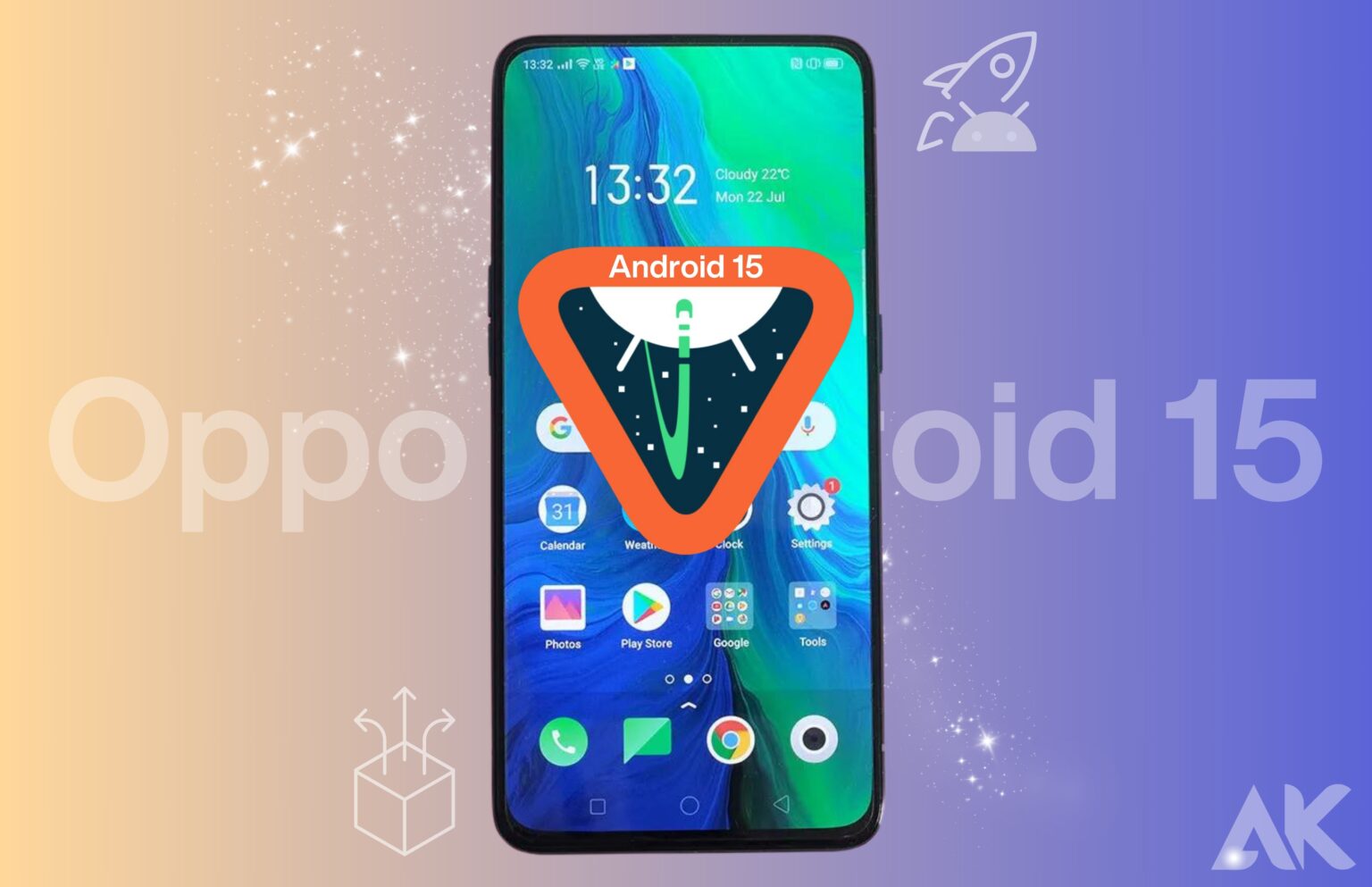Oppo is getting set to release Color OS 14, which is much anticipated, so you can expect an improved smartphone experience. In this detailed guide, we explore what the current version brings, providing information about the innovative features, improved performance, and cutting-edge technology that Oppo has planned for its customers. Learn how Oppo’s Color OS 14 will revolutionize mobile technology with its upgraded features and streamlined user interfaces. Discover the next development of Oppo’s Android operating system, including its release date and all the details you need to know, so you can stay ahead of the curve and explore the possibilities with us.
More concise and intuitive UI with optimized anamorphic design

Anamorphic Design, OPPO’s new design language released in ColorOS 13, was inspired by water and aimed to create a healthy relationship between people and technology. As a successor to the critically acclaimed ColorOS 13, ColorOS 14 improved upon Aquamorphic Design by adding new sound effects, color schemes, interactions, and more, resulting in a more streamlined and user-friendly smartphone experience.
A user’s intuitive experience is greatly influenced by sound, an unseen component. ColorOS 14’s new sound effects were developed in collaboration with the world’s best sound design team and OPPO, who teamed up with prestigious audio schools to research customer preferences. For a more consistent audio experience across all of your OPPO devices, we’ve included seven global UI sound designs and 10 sets of Aquamorphic-themed ringtones for calls, alarms, and alerts.
To effectively adjust to the state, time, and on-screen content of the smartphone, ColorOS 14 introduces an enhanced Aquamorphic coloring system. Providing a highly immersive and pleasant user experience, this dynamic coloring system dynamically matches hues with context, making information receiving and comprehension considerably more effective and intuitive.
New to ColorOS 14 is the Aqua Dynamics design, which allows for more natural user interactions. Expanding from the status bar, these panels, bubbles, and capsules include common forms of interaction to display information seamlessly and organically.
In keeping with OPPO’s motto, “Technology for Mankind, Kindness for the World,” ColorOS 14 has an Always-On Display called Homeland that has won awards for its powerful nature scenes and depictions of wild animals. The new GO Green Always-On Display aims to bring attention to environmental protection and climate change. In the Go Green AOD, there are three sets of Environment Vision pages. Each set has five animated scenes connected to the environment; these scenes may vary according to the user’s step count, demonstrating how walking reduces carbon dioxide emissions compared to alternative transportation options.
Boosting Efficiency with AI-Powered Smart Features

In recent times, AI has significantly contributed to improving productivity. ColorOS 14 has a plethora of useful smart features that are driven by artificial intelligence and designed to make users’ lives easier and more efficient.
Thanks to Smart Touch, which is driven by AI, users can easily gather media from the system and third-party applications into the File Dock. With a simple drag-and-drop action, they can even combine many pieces of information into one note.
The updated File Dock on the Smart Sidebar streamlines app-to-app sharing with the use of split-screen, floating windows, and the Dock itself. As an added productivity benefit, content may be synchronized across several devices (such as smartphones and tablets) and kept automatically in the File Dock.
For the first time on any smartphone, Smart Photograph Matting lets users crop several things, such as people and animals, from a single photograph or stopped video. In addition to sharing with friends or using the cutouts to customize a poster or wallpaper, users may modify them in File Dock, Split-screen mode, or File Pocket.
Ultra-smooth Performance with an Upgraded Trinity Engine
For users, the most important thing is that the experience runs smoothly. By optimizing the use of memory, storage, and processing power, the Trinity Engine in ColorOS 14 makes the smartphone more stable and easy to use. Memory (RAM), central processing unit (CPU), and read/write operation (ROM) vitalization are the three main aspects of the Trinity Engine.
ROM vitalization may condense data from apps and files in the Phone Manager to make more room in the RAM. Up to 20 GB of storage space may be saved by smartphones with ROM vitalization.
RAM vitalization may speed up memory performance, which improves multi-app efficiency and allows more background apps to stay active. Through the use of OPPO’s patented technologies and an analysis of Android’s core RAM mechanism, RAM Vitalization can increase usage smoothness by 10% and prolong the background execution of commonly used applications for up to 72 hours. App switching is much more seamless, and users won’t notice any difference.
OPPO’s CPU Vitalization is a top-tier system-level scheduling mechanism for processing power. A complex model of computational power is a part of it, and it can find the sweet spot between power consumption and performance when scheduling power resources. Users may have more seamless navigation without sacrificing battery life.
To further aid in the prevention of needless battery wear, ColorOS 14 includes Smart Charging, an AI system that can automatically modify the charging current depending on the smartphone’s use state. There are two alternatives available in Arctic Mode that consumers may choose from depending on the situation.
Which phones will get Android 15?
Although Google’s own Pixel 8 and Pixel 8 Pro devices will be receiving the upgrade, many other manufacturers of smartphones and tablets will also be receiving it.
Even while Android 14 is now rolling out, Google is, of course, hard at work on Android 15, the next major release. It is anticipated that the Developer Preview will be accessible to the first developers starting in February 2024. All interested parties with a suitable smartphone will be able to test out the first beta, which is slated to commence in April 2024.
Google has now announced the length of time that certain models will be eligible for Android and security patches. This means that these Pixel phones will be receiving Android 15 soon.
- The 8th generation Pixel and the 8th generation Pixel 8 Pro
- The Pixel Fold
- Pixel 7
- Surface 7 and Surface 7 Pro
- Android 6 and the Pixel 6 Pro
- Google Pixel 6a
The Pixel 5a 5G (maybe with Android 15) (till August 2024)
Conclusion
On February 14, Oppo will unveil Color OS 14, which will include an improved Aquamorphic Design and a more streamlined user interface. Improved smartphone usability is a result of the update’s improved sound effects, color schemes, and interactions.
Thanks to Aqua Dynamics’ redesign, interactions are now more natural, and Homeland’s Always-On Display, which has won awards for its work, has a new GO Green Always-On Display that promotes environmental protection and understanding of climate change. Additionally, there are smart features that are driven by AI and designed to boost productivity.
FAQS
Which phones will get Android 15?
The Pixels will, of course, be among the first to get Android 15. Launching with the Pixel 9 series, Google will progressively push out the stable Android 15 version to additional qualifying devices. Consequently, the most recent Pixel phone is your ideal choice if you want to get it initially.
Is Android 15 out yet?
In February or March of 2024, we anticipate the release of the Android 15 Developer Preview by the firm. April or May should bring the somewhat more reliable and simply installable beta, and August or October might see a stable release.
When will Android 14 come?
Android 14, the 21st version of the mobile operating system created by the Open Handset Alliance, which is headed by Google, is the fourteenth major update. On October 4, 2023, it was made public and made available via the Android Open Source Project (AOSP).

